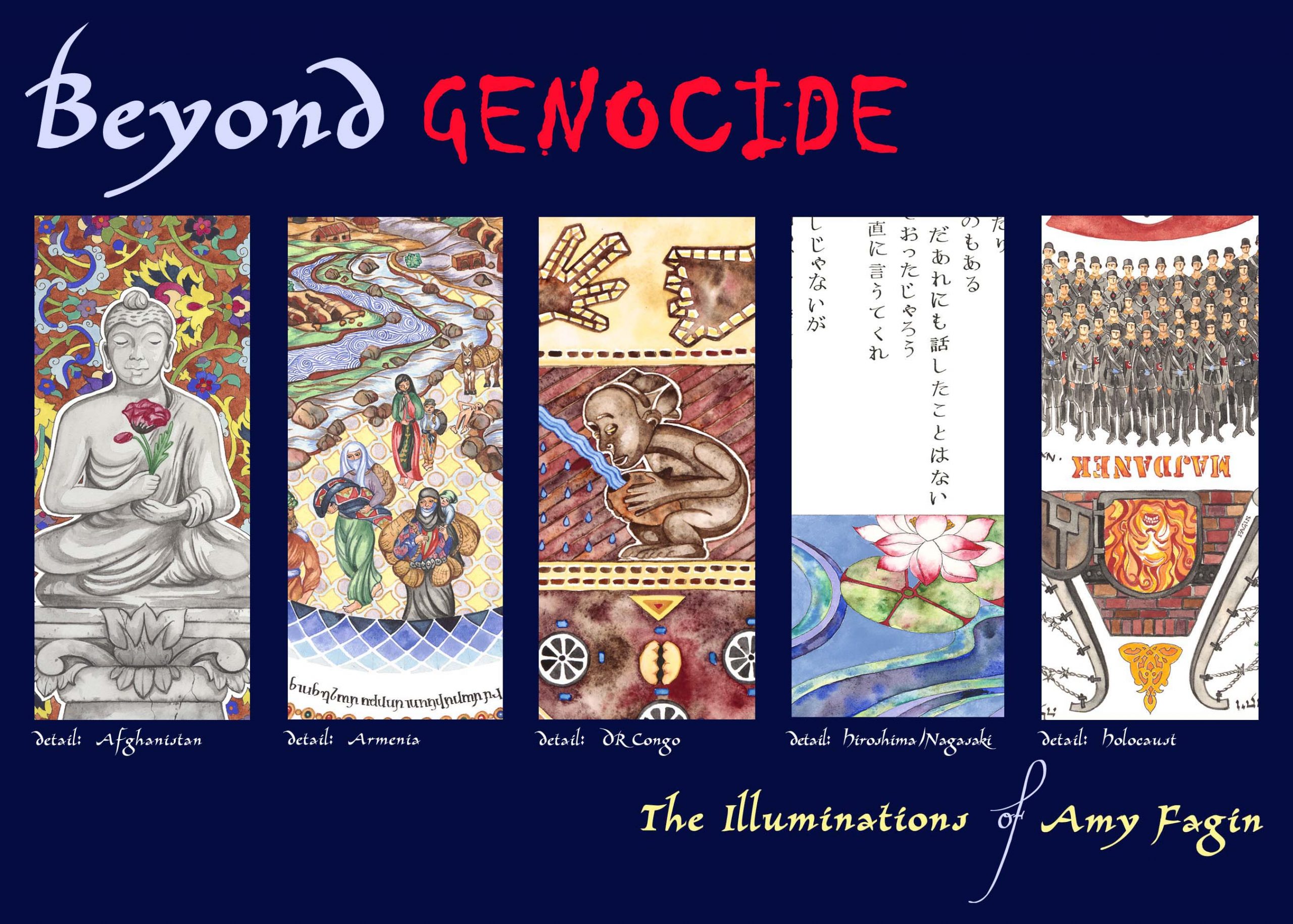On Film
Narrating genocide through film is one of the most widely distributed forms of acculturated communication on the subject around the globe. Cinematic representational genres, from epic historical depictions, intimate memoirs, drama, comedy, musicals to innovative mixed-media creations all struggle to contain and convey the mammoth historical overlays and contemporary interpretations of the unfathomable reality and tragic legacies of mass violence. Yet film and its industry undeniably, has popularized genocide awareness more influentially than any other creative medium of expression. This section will outline resources that address the confluence of foundational and current issues in the examination, comparison and challenges within the field of filmography, and genocide scholarship .
Film and Genocide: Written in 2012 this seminal volume explores the relationship between film and genocide and “brings together scholars of film and of genocide to discuss film representations, both fictional and documentary, of the Holocaust, the Armenian genocide, and genocides in Chile, Australia, Rwanda, and the United States. This volume looks at issues such as realism versus fiction and the challenges of the film industry to make violence “palatable to spectators and distributors”. The work is essential reading in understanding how film have constructed, shaped, countered or re-framed traumatic memory.
The History of Genocide in Cinema: Atrocities on Screen: This 2016 volume “analyzes fictional and semi-fictional portrayals of genocide, focusing on, amongst others, the repression of indigenous populations in Australia, the genocide of Native Americans in the 19th century, the Herero genocide, Armenia, the Holodomor (Stalin’s policy of starvation in Ukraine), the Nazi Holocaust, Nanjing and Darfur. Comprehensive and unique in its focus on fiction films, as opposed to documentaries, The History of Genocide in Cinema is an essential resource for students and researchers in the fields of cultural history, holocaust studies and the history of film”.
Killer Images: Documentary Film, Memory and the Performance of Violence The cinematography of genocide imagines in moving pictures the fragmented, unimaginable stories of violence perpetrated and endured. This analytically clear construction of commissioned essays implicates modernity’s compliance, and the fraught relationship between the silver screen, imagination and annihilation.
The Horrors of Trauma in Cinema: Violence, Void, Visualization: “This volume explores the multifaceted depiction and staging of historical and social traumata as the result of extreme violence within national contexts. International and interdisciplinary scholars analyze both mainstream and avant-garde movies and documentaries premiering from the 1960’s to the present. From transnational and cross-genre perspectives, they query the modes of representation – regarding narration, dramaturgy, aesthetics, mise-en-scene, iconology, lighting cinematography, editing and sound.”
Genocide Films, Public Criminology, Collective Memory: This journal publication from the British Journal of Criminology “brings together various strands of criminological thought by examining genocide films as a form of public criminology that is engaged in the work of memory and commemoration”.
Filmography of Genocide and Crimes Against Humanity: The International Association of Genocide Scholars hosts a web resource guide of a compilation of films with reviews based on case study conflict regions.
Genocide, Famine and Refugees on Film: Humanitarianism and the First World War: This Oxford Academic Past and Present journal article reflects on the use of silent film and how it shaped the perception and purpose of emergency first aid during WWI; how these films inaugurated the humanitarian aid industry and contributed to global awareness of humanitarianism as a “necessary response to total war.”
World Cinema and Cultural Memory: “Cinema has long played a crucial role in the way that societies represent themselves. Hedges discusses the role of cinema in creating cultural memory within a global perspective that spans five continents. The book’s innovative approach and approachable style should transform the way that we think of film and its social effects.” (Palgrave MacMillan)




